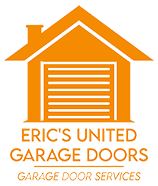Cable failures in garage door systems are more than an inconvenience—they’re a potential safety hazard that can lead to door misalignment, added motor strain, or complete system breakdown. Whether you’re managing a residential unit or need a commercial garage door repair service, understanding how vibration analysis enhances diagnostics can make cable fixes more accurate and efficient. With growing demand in areas like Dania Beach and Fort Lauderdale, data-driven approaches are becoming the new standard for long-term maintenance.
Why Cables Matter in Garage Door Systems
Cables work in tandem with springs and pulleys to lift and lower the door smoothly. When they begin to fray, stretch, or lose tension, the door can become unbalanced, placing uneven pressure on the opener and surrounding components. In high-use environments—especially for businesses relying on frequent door access—this can escalate into major service disruptions. Many searching for “garage door repair near me” may not realize that early signs of cable failure are often silent, making them difficult to spot without advanced tools.
Detecting Cable Wear Through Vibration Patterns
Vibration data allows technicians to identify subtle mechanical inconsistencies that precede visible cable damage. When a garage door opens and closes, each component generates specific vibration signals. Fraying cables or misaligned pulleys alter these signatures, often producing irregular patterns. By capturing and analyzing these shifts, technicians can detect emerging issues before they lead to system failure. In climates like Fort Lauderdale, where humidity and salt exposure can accelerate cable corrosion, this method provides a more reliable way to prevent surprises.
Optimizing Repairs for Commercial Operations
In commercial garage door repair service scenarios, efficiency is critical. Unexpected downtime affects delivery schedules, inventory movement, and employee productivity. Using vibration sensors, teams can monitor door systems continuously or conduct in-depth assessments during maintenance visits. This real-time feedback helps determine the right timing for a cable replacement or adjustment, avoiding both premature repairs and catastrophic delays. It also supports budget planning, allowing facility managers to prioritize repairs based on real data instead of visual guesswork.
Creating a Safer, Smarter Maintenance Process
For property owners in places like Dania Beach or Fort Lauderdale, where the climate and daily usage put extra stress on doors, vibration analysis adds a level of certainty to repair decisions. Instead of reacting to a snapped cable, professionals can act on patterns that reveal tension loss or mechanical imbalance. The result is a garage door repair strategy that’s not only more precise but also safer for everyone involved. Preventing a door from derailing or crashing down isn’t just cost-effective—it protects people, property, and peace of mind.
As vibration technology becomes more accessible, its role in fine-tuning cable repairs will only grow. Through better insights, garage door systems can stay reliable and safe, regardless of whether they serve a busy warehouse or a quiet residential driveway.
Read more:
Vibration-Based Calibration for Garage Door Repair Sensor Alignments
Detecting Spring Fatigue with Vibration Analysis in Garage Door Repair

